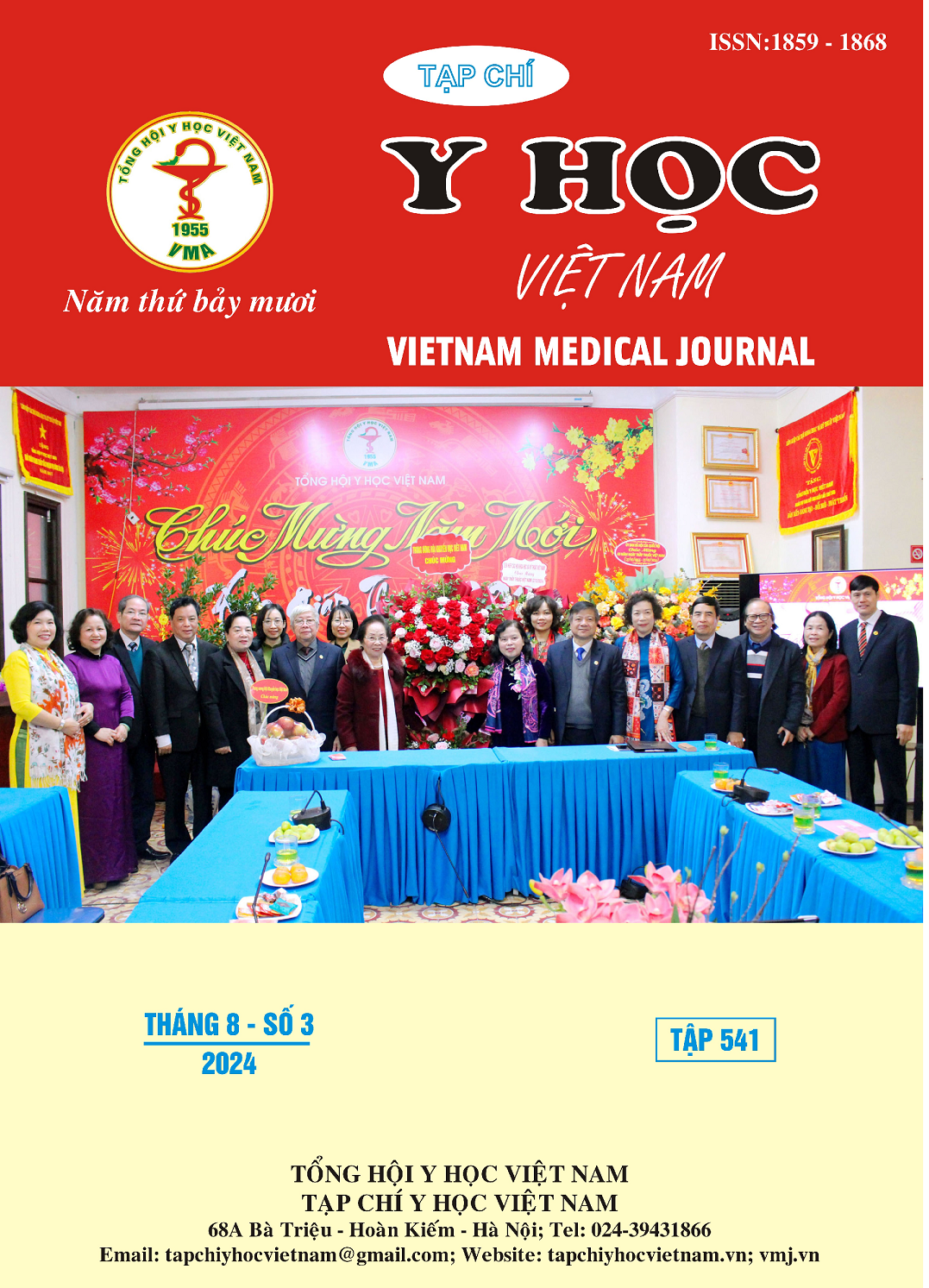PHYSICAL DISORDERS OF TEMPOROMANDIBULAR JOINTS AND OCCLUSIONS OF 10TH GRADE STUDENTS AT HERMANN GMEINER HANOI INTER-SCHOOL IN 2024
Main Article Content
Abstract
Introduction: The physical disorders of temporomandibular joints and occlusions are rather common among students both in Vietnam and worldwide. However, its valid evidence is limited, especially among secondary school students. Objective: Describe physical disorders of temporomandibular joints and occlusions of 10th-grade students at Hermann Gmeiner Hanoi inter-school in 2024. Subject and methods: A cross-sectional study was conducted on 151 10th-grade students at Hermann Interschool Gmeiner for the 2024–2025 academic year, comprising 73 males and 78 females. The temporomandibular joint, and occlusion status were determined by clinical examination. Results: Facial asymmetry with upper jaw midline deviation accounts for 21.9%, and lower jaw midline accounted for 41%. The average value of midline deviation of the upper jaw was 1.50±0.81 mm in men, and 1.29±0.47 mm in women. The average midline deviation of the upper jaw was 1.50±0.81 mm in men and 1.29±0.47 mm in women. For the lower jaw, the average midline deviation is 1.72±0.86 mm in men and 1.43±0.66 mm in women. There was no statistically significant difference between men and women (p>0.05). Pain disorders and sounds in the right temporomandibular joint accounted for 2.6% and 6.6%, respectively, and 0.7% and 5.9% for the left. Malocclusion disorder: crooked teeth account for 37%, 17.2% had a deep bite, 21.1% had overbite increased >3 mm, 16.6% had an open bite and 25.9% overbite of anterior teeth and crossbite of posterior teeth. The dental arch shape was oval with 84.8% of the upper dental arch and 75.5% of the lower dental arch. Correlation according to Angle's classification was mainly type I for both tooth 6 (first molar) and tooth 3 (canine), both right and left. Conclusions: The physical disorders of temporomandibular joints and occlusions are rather commonly among students at the 10th grade. There is a need to treat to ensure the physical development of these students.
Article Details
Keywords
Physical disorders, temporomandibular joint, occlusion, 10th-grade students, Hermann Gmeiner Hanoi inter-school
References
2. Li, D.T.S. and Y.Y. Leung. Temporomandibular Disorders: Current Concepts and Controversies in Diagnosis and Management. Diagnostics (Basel), 2021. 11(3).
3. Davies, S.J., et al., Orthodontics and occlusion. Br Dent J, 2001. 191(10): p. 539-42, 545-9.
4. Hoàng Anh Đào, Trần Xuân Việt Anh, Nguyễn Minh Tâm. Prevalence of temporomandibular disorders and its relation to malocclusion among odontostomatology students in Hue medical and pharmaceutical university. Journal of Medicine and Pharmacy: p. 85-93.
5. Hoàng Thị Lệ Giang, Nguyễn Gia Kiều Ngân, Văn Thị Nhung. Tình trạng lệch lạc khớp cắn của học sinh 12-15 tuổi tại thành phố Vinh, Nghệ An. Tạp chí Y học Việt Nam, 2023. 527(1B).
6. Ramirez-Yañez, G.O., et al., Prevalence of mandibular asymmetries in growing patients. Eur J Orthod, 2011. 33(3): p. 236-42.
7. Masuoka, N., et al., Discriminative thresholds of cephalometric indexes in the subjective evaluation of facial asymmetry. Am J Orthod Dentofacial Orthop, 2007. 131(5): p. 609-13.
8. Đỗ Minh Hương, Lê Thị Thu Hằng, Bùi Thị Hương Giang. Khớp cắn và tình trạng khớp thái dương hàm của sinh viên y khoa trường Đại học Y Dược Thái Nguyên. Tạp chí Khoa học và Công nghệ, 2020. 112(12)/2:223-227.
9. Sicari, F., et al. Body Image and Psychological Impact of Dental Appearance in Adolescents with Malocclusion: A Preliminary Exploratory Study. Children (Basel), 2023.


